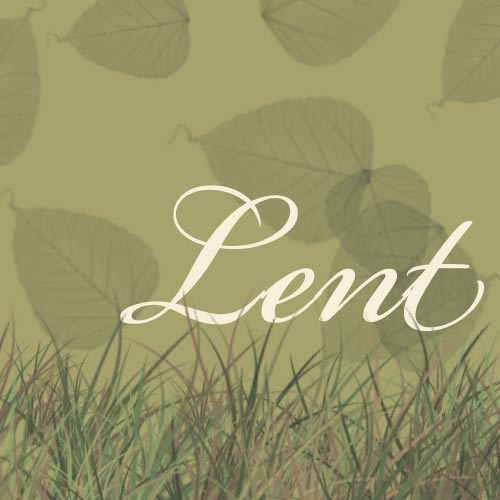In this second of two essays, Rolf Jacobson takes liturgical lemons and attempts to make theological lemonade. Jacobson takes a personal quirk — the fact that the oft-repeated metaphor “Lent is a journey” irritates him — and uses the opportunity to reflect on how Christian leaders can help congregations experience Lent as a richer, more meaningful season.
In a previous article, I argued that the metaphor of “Lenten journey” is effectively dead.
The second part of my thesis is this:
Congregations are invited to think in reverse. Imagine what sort of daily spiritual experiences that you want congregational members to have during Lent. Then, working from that imagination, build a thick metaphor or set of images that might held members have those experiences.
In pedagogical circles, this way of thinking is called “reverse design.”
Many educators approach building a learning experience by “reverse design.” In this approach, instead of just grabbing a textbook or borrowing another teacher’s syllabus, a teacher should design a course of study by first asking, “What learning outcome(s) do I want for learners once they have finished the course.”
Once these outcomes are identified, the educator can then work backward and build learning experiences intentionally designed to produce those outcomes. Lent is a season of the church year and not a course of study, so reverse design isn’t a perfect for thinking about Lent, but … mutatis mutandis, as the philosophers say.
So start with this question: What would you like to have happen in Lent to the individual and communal lives of Christians?
Answering this question first might help us reflect on how we should talk about Lent. In the previous essay, I quoted an anonymous woman whom I interviewed in preparation for this essay. I want to underscore something in her perspective. She longs for a practice of Lent that will go beyond the “obligation to go to church an extra day each week.” More than merely “the actions of going to church,” she hungers for something deeper — something that will connect with her daily life as a Christian.
So let’s refine the question a bit more: For the entire 40 days of Lent — not just for the worship services, but for the entire season of Lent — what do you want to happen in the individual and corporate lives of your congregation?
The team (or individual) who is planning Lent this year should first entertain that question. And depending on what sort of answer the team settles on for this year, build a thick Lenten experience that will help the entire congregation experience Lent as more than just six Sundays when we don’t sing “the A-word.” Rather, build a thick set of congregational experiences that will help people experience the entire 40-day season of Lent as a meaningful time of year.
I would rather that every set of congregational leaders answer the question, “What is Lent for?” on their own. Every congregation will get more out of this season of Lent if they wrestle with the issues and struggle with the questions on their own. But, for those who want me to put my money where my mouth is …
Lent is a time for individual and communal spiritual renewal. For individuals, I believe that Lent is a season to deepen in Christian faith to mature in Christian faith practices. For Christian communities, I believe that Lent is a time to grow in fellowship and hospitality.
In any given year, a congregation may want to focus on one spiritual practice.
A Few Ideas — Take Them and Run with Them
The last part of the thesis is:
If we move away from the dominant language of Lent as a journey, we can find better, more meaningful ways of talking about Lent.
Here are a few ideas.
- Lent can be thought of in temporal terms. Lent is a time, a countdown, a period, forty days, the long watch that ends the night.
- Lent can be thought of in terms of training. It is a discipline, a struggle, a fast, a commitment, preparation, a training, a scourging of the flesh, a putting-to-death of the flesh. (And who does this putting to death? God, not us.)
- Lent can be imagined in terms of its emotions. Lent is mourning our fallen-ness, grieving over sin, a season of sadness before the season of joy, a song of sorrow that precedes Easter’s shouts of praise. Lent is the dance of despair and dejection, before Easter’s lively rejoicing.
- Lent can be thought of in terms of truth. In Lent, the masks we put on to protect us from God’s penetrating stare are stripped away. In Lent, our lives are grasped by the power of God’s truth, which first strips us bare of our self-justifying lies, and second assures us that God truly loves us in spite of our failings.
- Lent can be thought of in terms of clothing. Lent is sack cloth, Easter is joy (see Psalm 30). Lent is all ashes and the dark attire of death. Easter is celebration.
- Lent is the bare, late-winter forest, denuded of leaf and life. Easter is the green blade rising from the buried grain.
- Lent is a season of coming in touch with our own sinfulness, need for redemption, and mortal condition. A time to learn — really learn — what it is to be dust and ashes.
Pick up one of these ideas for imaging Lent and run with it. And then next year, try a different one. Who knows, it might make for a fun journey!

